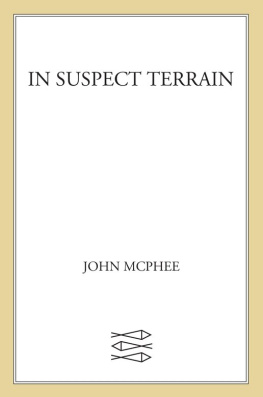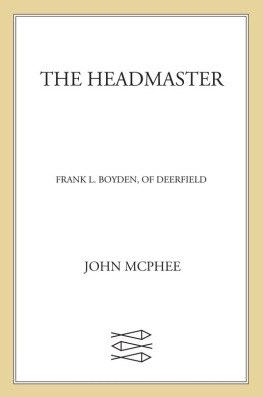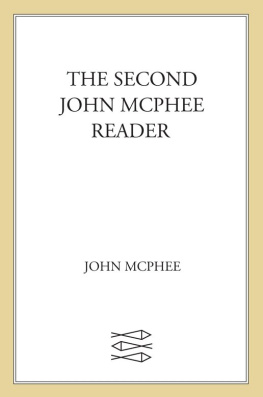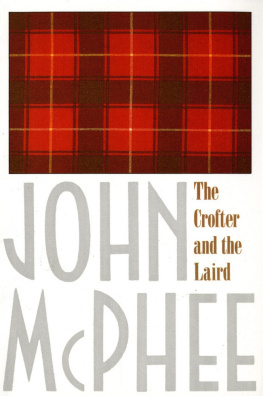W hen my third daughter was an infant, I could place her against my shoulder and she would stick there like velvet. Only her eyes jumped from place to place. In a breeze, her bright-red hair might stir, but she would not. Even then, there was profundity in her repose.
When my fourth daughter was an infant, I wondered if her veins were full of ants. Placing her against a shoulder was a risk both to her and to the shoulder. Impulsively, constantly, everything about her moved. Her head seemed about to revolve as it followed the bestirring world.
These memories became very much alive some months ago whenone after anotherI had bear cubs under my vest. Weighing three, four, 5.6 pounds, they were wild bears, and for an hour or so had been taken from their dens in Pennsylvania. They were about two months old, with fine short brown hair. When they were made to stand alone, to be photographed in the mouth of a den, they shivered. Instinctively, a person would be moved to hold them. Picked up by the scruff of the neck, they splayed their paws like kittens and screamed like baby bears. The cry of ababy bear is muted, like a human infants heard from her crib down the hall. The first cub I placed on my shoulder stayed there like a piece of velvet. The shivering stopped. Her bright-blue eyes looked about, not seeing much of anything. My hand, cupped against her back, all but encompassed her rib cage, which was warm and calm. I covered her to the shoulders with a flap of down vest and zipped up my parka to hold her in place.
I was there by invitation, an indirect result of work I had been doing nearby. Would I be busy on March 14th? If there had been a conflictif, say, I had been invited to lunch on that day with the Queen of Scotland and the King of SpainI would have gone to the cubs. The first den was a rock cavity in a lichen-covered sandstone outcrop near the top of a slope, a couple of hundred yards from a road in Hawley. It was on posted property of the Scrub Oak Hunting Clubdry hardwood forest underlain by laurel and patches of snowin the northern Pocono woods. Up in the sky was Buck Alt. Not long ago, he was a dairy farmer, and now he was working for the Keystone State, with directional antennae on his wing struts angled in the direction of bears. Many bears in Pennsylvania have radios around their necks as a result of the summer trapping work of Alts son Gary, who is a wildlife biologist. In winter, Buck Alt flies the country listening to the radio, crissing and crossing until the bears come on. They come on stronger the closer to them he flies. The transmitters are not omnidirectional. Suddenly, the sound cuts out. Buck looks down, chooses a landmark, approaches it again, on another vector. Gradually, he works his way in, until he is flying in ever tighter circles above the bear. He marks a map. He is accurate within two acres. The plane he flies is a Super Cub.
The den could have served as a set for a Passion play. Itwas a small chamber, open on one side, with a rock across its entrance. Between the freestanding rock and the back of the cave was room for one large bear, and she was curled in a corner on a bed of leaves, her broad head plainly visible from the outside, her cubs invisible between the rock and a soft place, chuckling, suckling, in the wintertime tropics of their own mammalian heaven. Invisible they were, yes, but by no means inaudible. What biologists call chuckling sounded like starlings in a tree.
People walking in woods sometimes come close enough to a den to cause the mother to get up and run off, unmindful of her reputation as a fearless defender of cubs. The cubs stop chuckling and begin to cry: possibly three, four cubsa ward of mewling bears. The people hear the crying. They find the den and see the cubs. Sometimes they pick them up and carry them away, reporting to the state that they have saved the lives of bear cubs abandoned by their mother. Wherever and whenever this occurs, Gary Alt collects the cubs. After ten years of bear trapping and biological study, Alt has equipped so many sows with radios that he has been able to conduct a foster-mother program with an amazingly high rate of success. A mother in hibernation will readily accept a foster cub. If the need to place an orphan arises somewhat later, when mothers and their cubs are out and around, a sow will kill an alien cub as soon as she smells it. Alt has overcome this problem by stuffing sows noses with Vicks VapoRub. One way or another, he has found new families for forty-seven orphaned cubs. Forty-six have survived. The other, which had become accustomed over three weeks to feedings and caresses by human hands, was not content in a foster den, crawled outside, and died in the snow.
With a hypodermic jab stick, Alt now drugged themother, putting her to sleep for the duration of the visit. From deeps of shining fur, he fished out cubs. One. Two. A third. A fourth. Five! The fifth was a foster daughter brought earlier in the winter from two hundred miles away. Three of the four others were malea ratio consistent with the heavy preponderance of males that Alts studies have shown through the years. To various onlookers he handed the cubs for safekeeping while he and several assistants carried the mother into the open and weighed her with block and tackle. To protect her eyes, Alt had blindfolded her with a red bandanna. They carried her upside down, being extremely careful lest they scrape and damage her nipples. She weighed two hundred and nineteen pounds. Alt had caught her and weighed her some months before. In the den, she had lost ninety pounds. When she was four years old, she had had four cubs; two years later, four more cubs; and now, after two more years, four cubs. He knew all that about her, he had caught her so many times. He referred to her as Daisy. Daisy was as nothing compared with Vanessa, who was sleeping off the winter somewhere else. In ten seasons, Vanessa had given birth to twenty-three cubs and had lost none. The growth and reproductive rates of black bears are greater in Pennsylvania than anywhere else. Black bears in Pennsylvania grow more rapidly than grizzlies in Montana. Eastern black bears are generally much larger than Western ones. A seven-hundred-pound bear is unusual but not rare in Pennsylvania. Alt once caught a big boar like that who had a thirty-seven-inch neck and was a hair under seven feet long.
This bear, nose to tail, measured five feet five. Alt said, Thats a nice long sow. For weighing the cubs, he had a small nylon stuff sack. He stuffed it with bear and hung it on a scale. Two months before, when the cubs were born,each would have weighed approximately half a poundless than a newborn porcupine. Now the cubs weighed 3.4, 4.1, 4.4, 4.6, 5.6cute little numbers with soft tan noses and erectile pyramid ears. Bears have sex in June and July, but the mothers system holds the fertilized egg away from the uterus until November, when implantation occurs. Fetal development lasts scarcely six weeks. Therefore, the creatures who live upon the hibernating mother are so small that everyone survives.
















